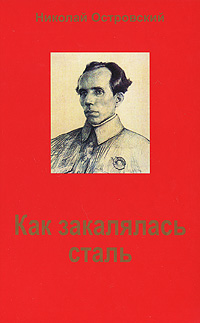How the Steel Was Tempered

How the Steel Was Tempered (Russian: Как закалялась сталь, Kak zakalyalas’ stal’) or The Making of a Hero, is a socialist realist novel written by Nikolai Ostrovsky (1904–1936). With 36.4 million copies sold, it is one of the best-selling books of all time.[1]
The story follows the life of Pavel Korchagin, including his fighting in and aftermath of the Russian Civil War. Korchagin fought for the Bolsheviks during the war and was injured. The novel examines how Korchagin heals from his wounds and thus becomes as strong as steel.
The novel begins when Korchagin is 12, living in the town of Shepetovka in Ukraine. He gets kicked out of school for putting tobacco in some bread dough and must go to work as a dishwasher. As a dishwasher he is beaten by a coworker, but his brother Artyom defends him. The novel jumps forward to age 16 when he is working in a power plant. He meets a Bolshevik named Zhukhrai after a run-in with the Tsarist secret police. Zhukrai tells him about the Bolesheviks and Lenin. He also meets Tonia Toumanova, his love interest. Again the novel jumps, to 1917 as the German army invades Shepetovka. Korchagin fights the Germans, and eventually joins the Bolsheviks in the Civil War. He is seriously injured and partially loses his sight. After the war he worked as a laborer, including building railways. He eventually is injured further, and loses his legs and a hand. He goes to Crimea to live out his days. The book closes with Korchigan sitting down to write an autobiography: “How the Steel Was Tempered”, thus establishing the book as a self-fulfilling framing device.
The first part of How the Steel was Tempered was published serially in 1932 in the magazine Young Guard. The second part of the novel appeared in the same magazine from January to May, 1934. The novel was published in 1936 in book form in a heavily edited version that conformed to the rules of socialist realism. In the serial version Ostrovsky had described the tense atmosphere of Pavel’s home, his suffering when he became an invalid, the deterioration of his relationship with his wife, and their separation. All of this disappeared in the 1936 publication and in later editions of the novel.[4]
A Japanese translation of the novel was made by Ryokichi Sugimoto.
